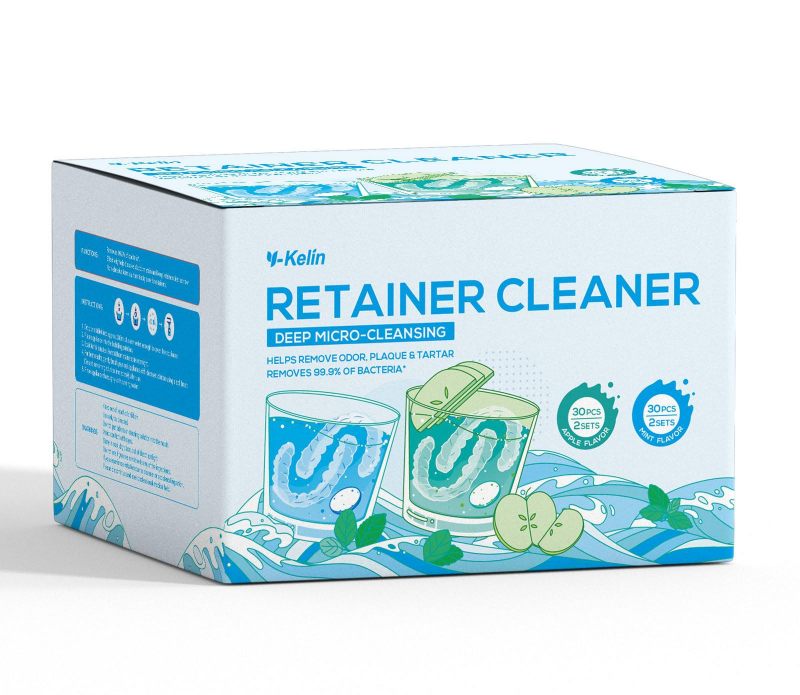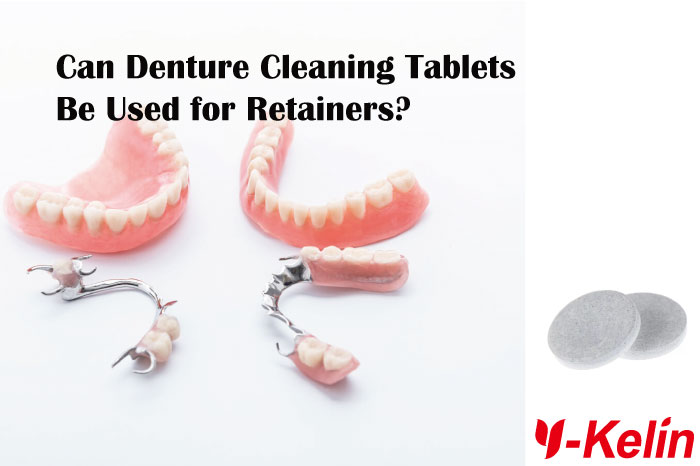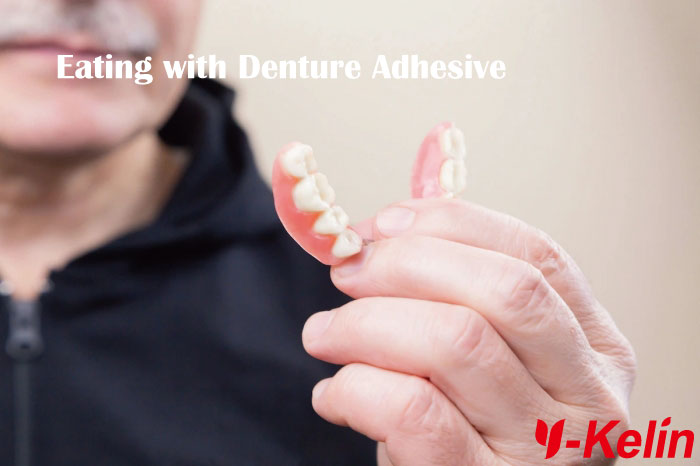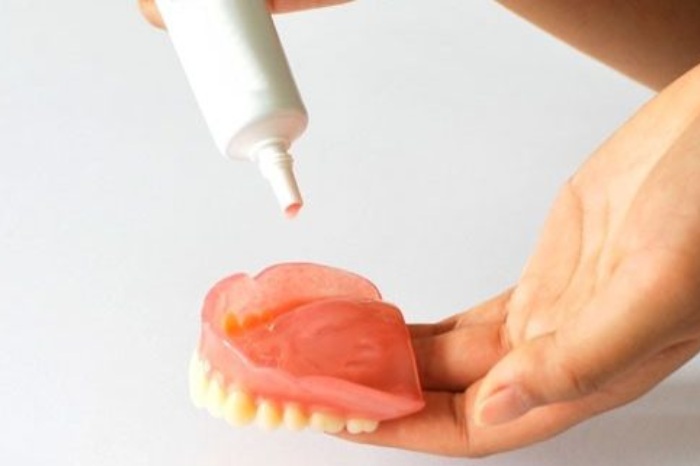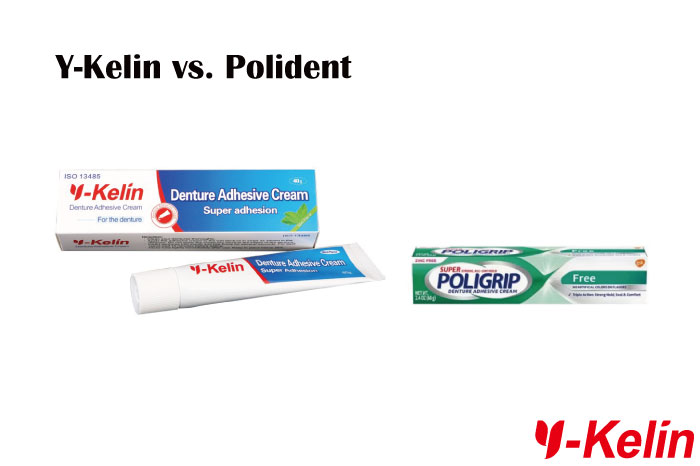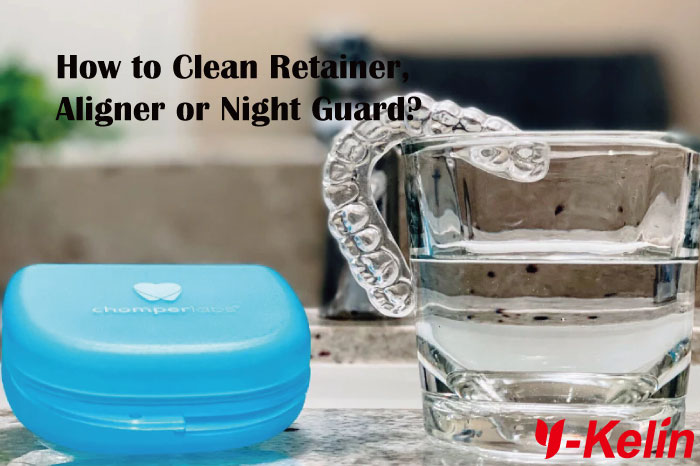
How to Clean Retainer, Aligner or Night Guard?
Published On:
Taking care of your retainer, aligner, or night guard is essential for your oral health. A clean, well-maintained mouthguard not only ensures comfort but also extends its life.
Cleaning your retainer, aligner, or night guard properly is easy if you know the right methods. Regular care will keep them free from buildup, bacteria, and odors.
Let’s dive into how you can keep these dental devices spotless and safe to use, whether you’re looking for daily maintenance or deep cleaning techniques.
How to Clean Retainer, Aligner or Night Guard?
How to Clean a Retainer Mouthguard?
Cleaning your mouthguard should be a daily task to keep it free from plaque and bacteria. But how exactly should you do it?
To clean your retainer or mouthguard, rinse it under lukewarm water every day and use a gentle toothbrush to scrub away any buildup.
When it comes to cleaning a mouthguard, the key is to avoid harsh chemicals that can damage the material. Start by rinsing it after every use to remove saliva and food particles. You can use a soft toothbrush and mild soap to gently scrub away any buildup. Avoid using hot water, as it can warp the shape of your retainer. Once a week, consider using a cleaning solution or denture cleaner to keep your mouthguard extra fresh.
For deeper cleaning, you can soak your retainer in a mixture of vinegar and water. Just make sure to rinse thoroughly afterward to avoid any lingering smell or taste. Additionally, if you wear your retainer while sleeping, be sure to store it in a clean, dry case to prevent bacteria growth when it’s not in use.
Common Mistakes to Avoid:
| Mistake | Why It’s a Problem |
|---|---|
| Using hot water | It can warp the shape of the mouthguard. |
| Using toothpaste | It can be abrasive and scratch the surface. |
| Not drying it out | A wet environment promotes bacterial growth. |
Maintaining a regular cleaning schedule for your retainer mouthguard ensures it stays fresh and effective.
How Do You Clean an Aligner Retainer?
Aligners require extra care because they fit snugly over your teeth. Here’s how to clean them safely without causing damage.
To clean an aligner, use lukewarm water and a soft toothbrush. Avoid using toothpaste as it can scratch the surface and affect its clarity.
Cleaning aligners involves similar steps to cleaning retainers but requires extra attention to prevent discoloration and damage. Always use lukewarm water when cleaning your aligner. Hot water can distort its shape. When cleaning with a toothbrush, make sure to use a soft-bristled brush to avoid scratching the surface of the aligner, which can lead to stains and buildup.
Avoid using toothpaste because it can be abrasive and cause tiny scratches on the aligner’s surface, allowing bacteria to accumulate more easily. A good alternative is to use a cleaning solution specifically designed for aligners or denture tablets. These products are gentle and effective, helping to keep your aligners clean without causing harm.
Another cleaning method you can try is soaking your aligners in a mixture of water and a small amount of baking soda. This helps remove odors and disinfects them without affecting their clarity.
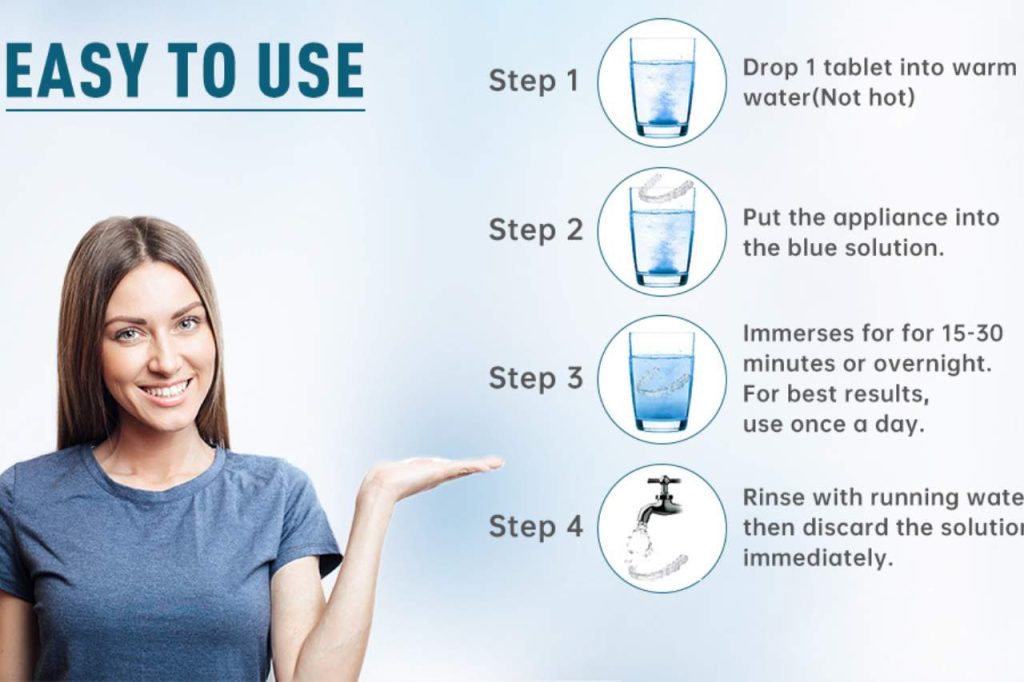
How to Remove Calcium Buildup on Night Guard?
If you’ve noticed that your night guard has developed a white, chalky coating, that’s likely calcium buildup. Let’s explore how to get rid of it.
Calcium buildup on night guards can be removed by soaking them in a vinegar and water solution. This helps break down the minerals and restore clarity.
Calcium buildup on a night guard is common, especially if you use it regularly while grinding your teeth at night. This buildup occurs because minerals in your saliva combine with food particles and plaque to form hard deposits on the surface of your night guard. Over time, this can make your night guard feel rough and less comfortable.
To remove calcium buildup, you can soak your night guard in a mixture of equal parts white vinegar and water. The acidity in vinegar helps to break down the mineral deposits without damaging the material of the night guard. Let it soak for about 15 to 20 minutes, then rinse thoroughly with lukewarm water to remove any vinegar residue.
If the buildup persists, you can gently scrub the affected area with a soft toothbrush. For stubborn deposits, consider using a denture cleaner that is specifically designed to tackle mineral buildup. However, be sure to avoid abrasive cleaners, as they can scratch and weaken the material over time.
Deep Cleaning Solutions Comparison:
| Solution | Pros | Cons |
|---|---|---|
| Denture cleaner | Kills bacteria, removes odors. | Can be expensive. |
| Baking soda & water | Gentle, natural cleaner. | Takes longer to soak. |
Can You Use Vinegar to Clean a Mouth Guard?
Vinegar is often recommended as a natural cleaner, but is it safe for your mouthguard? Let’s find out.
Yes, vinegar can be used to clean your mouthguard, but it should be diluted with water. Soak your mouthguard for a few minutes, then rinse thoroughly.
Vinegar is an excellent natural cleaning agent for mouthguards because of its acidic properties, which help break down buildup and kill bacteria. To use vinegar safely, mix it with an equal amount of water. Soak your mouthguard in this solution for about 10 to 15 minutes, then scrub gently with a soft toothbrush to remove any remaining residue.
While vinegar is effective, it should never be used undiluted, as its acidity can wear down the material of your mouthguard over time. After soaking, be sure to rinse your mouthguard thoroughly with lukewarm water to remove any lingering vinegar smell or taste. If you prefer, you can follow up with a rinse in mouthwash to leave your mouthguard smelling fresh.
It’s also important to note that vinegar may not be suitable for every type of mouthguard. If you have a retainer or aligner made of more delicate materials, it’s best to check with your dentist or orthodontist before using vinegar as a cleaning method.
Why Is My Mouth Guard Turning Yellow?
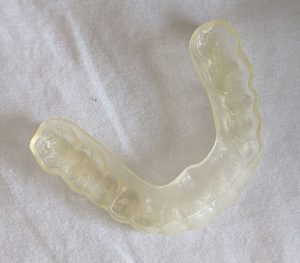
Yellow stains on your mouthguard can be a sign of bacteria or plaque buildup. Let’s find out why it’s happening and how to fix it.
Mouthguards can turn yellow due to the buildup of bacteria, food particles, or the natural oils in your saliva. Regular cleaning can help prevent this discoloration.
Yellowing on a mouthguard is usually caused by a combination of factors, including bacteria, food particles, and natural oils from your saliva. These substances accumulate on the surface of your mouthguard over time, giving it a yellowish tint. If you notice your mouthguard turning yellow, it’s a sign that it’s not being cleaned thoroughly enough.
The best way to prevent yellowing is by cleaning your mouthguard regularly after every use. Use lukewarm water and a soft toothbrush to remove any buildup. Additionally, soaking your mouthguard in a denture cleaning solution once a week can help keep it fresh and clear.
If your mouthguard is already yellowed, you can try soaking it in a mixture of water and vinegar or a baking soda solution. These substances can help lift the yellow stains and restore the clarity of your mouthguard. If the yellowing persists, it may be time to replace your mouthguard, as prolonged buildup can degrade the material over time.
Preventing Yellowing:
| Tip | Why It Helps |
|---|---|
| Clean after each use | Reduces the buildup of bacteria and food particles. |
| Store in a dry case | Prevents moisture from encouraging bacterial growth. |
How Often Should You Wash a Mouthguard?
Maintaining a clean mouthguard requires regular washing. But how often should you really wash it?
It’s important to wash your mouthguard after each use to prevent bacteria buildup. Additionally, deep cleaning once a week helps keep it in top condition.
You should rinse your mouthguard after every use, especially if you’ve been using it while sleeping or playing sports. This will help remove saliva, food particles, and any other debris that may have accumulated. In addition to this daily cleaning, it’s essential to deep clean your mouthguard once a week to prevent the buildup of plaque, bacteria, and mineral deposits.
To deep clean, you can soak your mouthguard in a vinegar and water solution or use a specialized cleaning tablet. This should be done at least once a week to ensure that your mouthguard stays in optimal condition. Deep cleaning also helps remove odors and ensures that your mouthguard remains free from bacteria that could lead to oral health issues.
How to Get Rid of Yellow on a Retainer?
Yellow stains on a retainer can be unsightly and a sign of poor maintenance. Let’s go over how you can restore its appearance.
To remove yellow stains from your retainer, soak it in a vinegar-water solution or use a denture cleaning tablet for best results.
Yellow stains on a retainer often occur when plaque, bacteria, or food particles are not properly cleaned off. The best way to get rid of the yellow stains is to soak your retainer in a mixture of vinegar and water. This will help dissolve the mineral deposits that cause the yellowing.
If you prefer, you can use a denture cleaning tablet to soak the retainer. These tablets are specially formulated to clean and disinfect dental appliances, and they are gentle on the material. After soaking, use a soft toothbrush to scrub away any remaining buildup.
If the yellowing persists, it may be a sign that your retainer needs a more thorough cleaning or possibly even replacement. Make sure to clean your retainer regularly to prevent future discoloration.
Why Is My Night Guard Cloudy?
Cloudiness on your night guard is a common issue that many people face. But what causes it, and how can you fix it?
It is often caused by mineral buildup or improper cleaning. Regular deep cleaning can restore clarity.
Cloudiness on your night guard usually happens when mineral deposits from your saliva build up on the surface. This can make the material look hazy or cloudy. The best way to get rid of this cloudiness is by performing regular deep cleaning.
Soak your night guard in a vinegar and water solution for 15 to 20 minutes to dissolve the mineral deposits. You can also use a denture cleaning tablet, which is effective at breaking down the buildup and restoring clarity. After soaking, gently scrub your night guard with a soft toothbrush to remove any remaining particles.
If the cloudiness persists, it might be time to replace your night guard. Over time, the material can degrade and become permanently cloudy. Regular cleaning can help prevent this issue and extend the life of your night guard.
Conclusion
In conclusion, regular cleaning of your retainer, aligner, or night guard is essential for both oral health and comfort. By following the cleaning methods outlined, you can ensure that your dental appliances remain in top condition.
Get in Touch with Y-Kelin
Have questions or need more information? Contact us today, and our dedicated team will assist you promptly.


Y-Kelin is a trusted manufacturer of high-quality denture care products, including denture cleaning tablets, adhesive creams, and retainer cleaning solutions, offering customized services for global partners.
